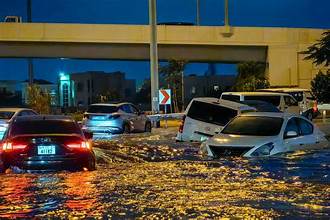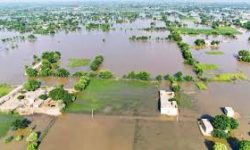
Startup Rainmaker Blamed by Conspiracy Theorists After Deadly Storms
Augustus Doricko, founder of weather-tech startup Rainmaker, never expected the backlash he’s facing now. After severe floods hit Texas, killing over 100 people and leaving many missing, Doricko and his company have become the center of online conspiracy theories suggesting cloud seeding may have triggered the disaster.
What Is Cloud Seeding?
Cloud seeding is a weather modification method where planes release substances like silver iodide into clouds to encourage rainfall or snowfall. The technology has been used for decades, but scientists agree its effects are limited and localized.
“It’s impossible for cloud seeding to cause extreme weather like this,” said Bob Rauber, a veteran atmospheric scientist. “The energy needed for such a storm is far beyond what cloud seeding can generate.”
What Actually Happened?
On July 2, a Rainmaker plane seeded clouds near Runge, Texas, around 100 miles from Kerr County, where the flooding occurred. The flight released 70 grams of silver iodide, resulting in a light drizzle that barely registered.
Two days later, heavy rains — remnants of Tropical Storm Barry — poured up to 15 inches on parts of Kerr County. Despite the distance and the natural cause of the storm, online users began blaming Rainmaker for the disaster.
Social Media Uproar and Political Reactions
Soon after, social media exploded. Verified accounts and influencers started circulating Rainmaker’s weather modification license, accusing the company of contributing to the flood.
U.S. Representative Marjorie Taylor Greene even announced plans to introduce legislation to criminalize weather modification, while Michael Flynn, a former Trump advisor, also questioned the operation online.
Some TikTok users edited past interviews of Doricko, pairing them with dramatic music and footage of the flooding. Doricko said he anticipated backlash at some point but didn’t expect this scale of misinformation and threats.
Is Cloud Seeding Dangerous?
Despite the fear, most scientists maintain that cloud seeding is not powerful enough to cause or worsen extreme weather events.
-
A 2017 study in Idaho showed a small increase in snowfall using cloud seeding—just a fraction of a millimeter per event.
-
Over a full winter, these tiny boosts can help replenish water supplies but not enough to cause natural disasters.
Cloud seeding has a long and controversial history. The U.S. government experimented with it during the Cold War, and today, over 39 countries use the method to tackle drought. Countries like China, Saudi Arabia, and the UAE have spent hundreds of millions of dollars on weather modification programs.
Public Concern and Government Response
Amid the controversy, the Environmental Protection Agency (EPA) issued a statement acknowledging public concerns over geoengineering. The EPA launched a new website to provide transparent information about contrails, cloud seeding, and other weather-modification techniques.
While 10 U.S. states have proposed or passed bans on cloud seeding, many Western states actively fund the practice to combat historic droughts.
Rainmaker’s Future
Despite the storm of criticism, Rainmaker continues to grow. The startup has raised $31 million in venture capital and employs nearly 60 people. Even during the current crisis, Doricko said he’s receiving inquiries from potential clients interested in using cloud seeding for agricultural needs.
Doricko remains focused on building public trust, emphasizing the importance of oversight and transparency. But he warns against the spread of online blame and misinformation.
“If people believe disasters are human-made, they think they can stop them,” he said. “But it’s much harder to accept that sometimes nature just happens — and we have to deal with it.”









